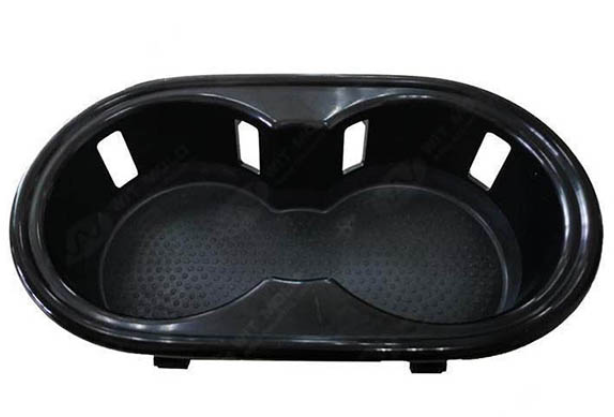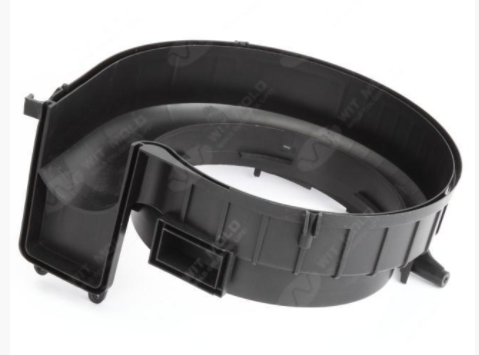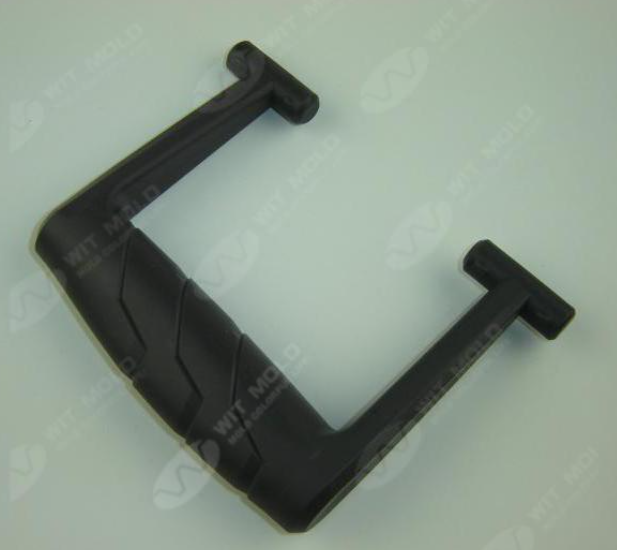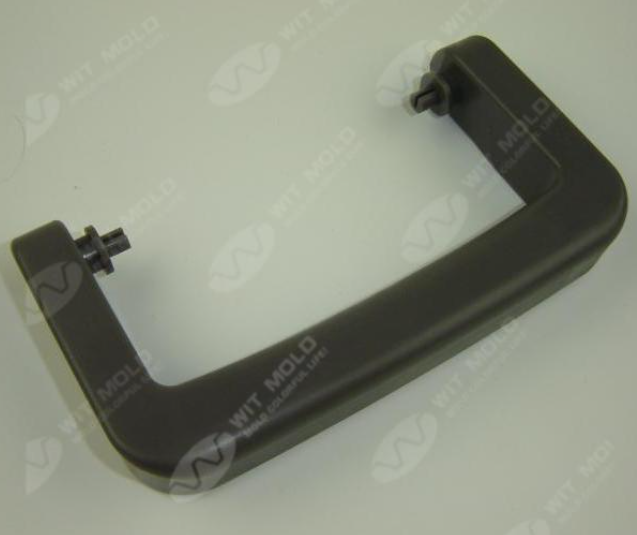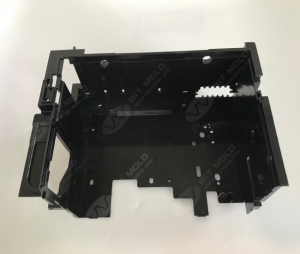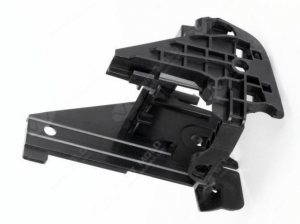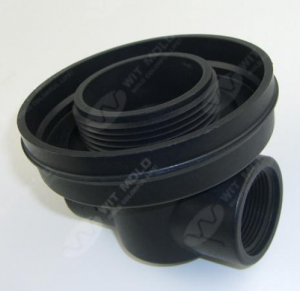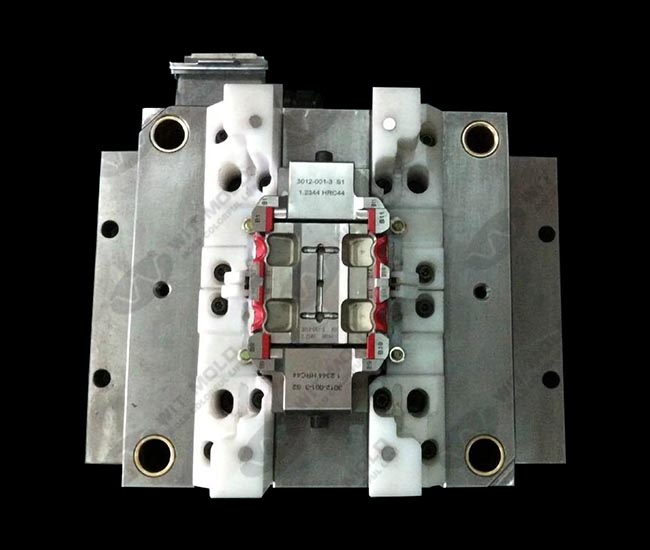Definition
Two-shot molding, also known as dual-shot, multi-shot, or double-shot molding is a subcategory of injection molding that allows engineers to create multi-material or multi-colored parts without adding extra assembly steps.
The two-shot injection molding process is best understood in terms of the different layers of materials or colors that are created by the injection molding machine. The first material is injected into a mold to create the substrate, around which the other material or materials will be molded. The substrate solidifies and cools before being transferred — by hand, robot arm, or rotary plane — to the other chamber of the mold.
From there, the mold opens and the side with the substrate rotates 180° to meet the other mold chamber and injection molding nozzle. Once the substrate is in place, the second material is injected and bonds with the substrate to form a firm hold. Once the second layer cools, the final part is ejected.
Engineers should know that two-shot injection molding can be sped up or slowed down based on how the substrate is transferred to the other chamber of the mold. Hand and robot arm transfers take longer than a rotary plane, but rotary platen molding is more expensive and generally only an efficient option for high-volume production runs.
Additionally, it’s critical that molds are made out of materials that will easily bond together and that the molds align correctly to prevent deformities in the part.
Pros and cons of two-shot molding
Two-shot plastic injection molding is an excellent technique for efficient and cost-effective manufacturing. This process also produces highly durable end parts and components.
From a design standpoint, two-shot molding offers designers a lot of flexibility because this process can create complex geometries and accommodate multiple colors, making for more aesthetically pleasing parts.
Further, since one machine makes the whole part and no post-processing is required, engineers can dramatically reduce manufacturing time, which in turn keeps costs low. However, it’s worth noting that the initial two-shot mold costs can be high and the two-shot molding machine is more expensive than a standard injection molding machine. Luckily, these costs are often offset by labor savings and assembly costs on large production runs.
We are a TWO SHOT INJECTION MOLDS manufacturer, please contact us if you need them!
